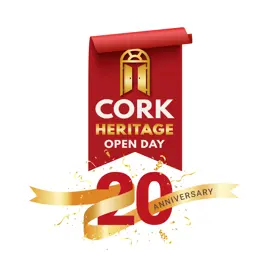Ballincollig Gunpowder Mills
Address: Lackenshoneen, Ballincollig,
The Ballincollig Gunpowder Mills now in the care of Cork City Council is the second largest Gunpowder Mills in Britain and in Ireland. Located in the Ballincollig Regional Park the site covers approximately 52 hectares (130 acres) and the linear Powder Mills run along 2.4 kms of the River Lee. This is Ireland’s largest and most important industrial archaeological site. Today the remains of about 100 buildings associated with the gunpowder manufacturing process survive. Many of the buildings are in very poor repair, and are rapidly being over powered by out of control vegetation and tree growth.
Ballincollig was chosen for the development of a gunpowder manufacturing facility due to the availability of a large area of flat land in the valley, the proximity to Cork City, and reliable water power were key reasons. The Powder Mills was originally developed in 1794 by Cork man Charles Leslie from Wilton, and his partner John Travers. They built a weir and main canal 1.5 miles long. By 1801 the mills were a highly productive and prosperous concern. In 1805 they sold the property for €30,000 to the British Board of Ordnance, the Government Department responsible for the defence of the realm.
The British Board of Ordnance required the Powder Mills production to help meet the British Army demands for gunpowder for the Napoleonic Wars and they carried out a major expansion of the then existing Powder Mills. The site was enlarged from 90 acres to 431 acres, and the Ballincollig Cavalry Barracks was built in 1810 to provide added security for the Mills. A hight perimeter stone wall that still survives today was built, together with four Watch Houses. Oriel Court (House), now a hotel was constructed at this time for the management involved in the running of the Powder Mills. With the end of the Napoleonic Wars in 1815, the need for gunpowder declined and in that year the Ballincollig Gunpowder Mills closed and in 1831 some of the equipment was auctioned off.
In 1834 the Mills were bought by English interests Thomas Tobin and Charles Horsefall for a sum of €15,000. They were from Liverpool and opened the mills in the following year 1835. By 1840 the Ballincollig Gunpowder Mills employed 200 workers, and just two years later the mills were exporting 17,700 cases of Gunpowder per year. Exports went to Africa in exchange for Palm Oil.
The development of the Powder Mills continued, and at one stage the mills employed up to 500 people, to provide the gunpowder needs for the construction industry especially railways, mining, and quarrying. By 1850 twenty water wheels were in use, but decline set in from 1880 onwards. In 1888 the ownership of the Powder Mills changed yet again, and the property was bought by John Briscoe and the site was under the control of Curtis & Harvey an English explosives company. Finally, in 1903 the Ballincollig Powder Mills closed and the operation was taken over by ICI – Imperial Chemical Industries. In 1974 the site was bought by Cork County Council, and this facilitated the development of the highly successful Ballincollig Regional Park.
Due to the nature of the manufacturing process at the Powder Mills there were a number of explosions. These included an explosion on 25th August 1809 that killed five workers, and the shock was felt in Cork City. The following year in November 1810 a major explosion at Brandy Lane in Cork City demolished 3 houses and others set on fire and nineteen people were killed. The explosion was caused by gunpowder stolen from the Ballincollig Powder Mills that was being dried at home in front of the fire! In the period from 1859 –to 1863 three further explosions killed twelve workers.

